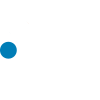Biden’s Student Loan Forgiveness: How & When to Apply
When President Biden’s student loan forgiveness plan was unveiled, many believed this was a step in the right direction. It’s estimated that 43 million borrowers will have up to $20,000 of their student loan debt canceled, with as many as 20 million having their debt completely erased. Nearly 90% of the relief is expected to go to borrowers who earn less than $75,000 a year.
Although some state governors want to stop Biden’s plan from moving forward, most borrowers are eagerly awaiting more details on how to get relief. Here’s what we know so far about how and when to apply.
Are You Eligible?
First, it’s important to verify that you are eligible to receive relief under Biden’s student loan forgiveness plan. Here are the two main criteria to qualify:
- Your annual income is below $125,000 (individuals) or $250,000 (married couples or heads of households). If you are a dependent student, your parent’s income will determine eligibility for relief.
- You received a Pell Grant or you have a Federal Direct Loan (including graduate and Parent PLUS loans).
If you have Pell Grants, you can receive up to $20,000 in loan forgiveness. For eligible federal loans, the maximum amount is $10,000 in debt cancellation. If you owe less than the maximum allowed, your relief is capped at the amount of your outstanding debt.
Ineligible Student Loans
Not all student loans are eligible for relief under Biden’s student loan forgiveness plan. Private loans are ineligible for relief. If you paid off your federal student loans before March 13, 2020, you aren’t eligible to apply. Any grants or loans, regardless of type, disbursed after June 30, 2022, are also ineligible under the current plan.
It’s still unclear if Federal Family Education Loans (FFEL) will qualify. Originally, the U.S. Department of Education (DOE) said any of its loans were eligible. Recently, however, they said they were looking for ways to ensure commercially-held federal student loan borrowers were also included. Only time will tell if borrowers with these types of loans will get relief.
How to Apply For Student Loan Forgiveness
Nearly 8 million borrowers may be eligible for automatic student loan forgiveness and won’t be required to complete any application. This is because the DOE already has income data on these borrowers. All others who may be qualified will need to fill out a simple application (not yet available) on the DOE’s website. Once the application is completed, you can expect to receive relief within 4 to 6 weeks.
3 Key Dates For Biden’s Student Loan Forgiveness Application
Although the DOE has not released the application for Biden’s student loan forgiveness program at this time, there are three main dates you need to pay attention to if you want to receive student debt relief.
Early October 2022
The DOE expects to open up the student loan forgiveness application in early October. If you’d like to be notified when it’s available, you can sign up on the DOE’s subscription page.
November 15, 2022
Once you complete the student loan forgiveness application, it may take up to 6 weeks for your account to be credited. Since the student loan repayment pause is set to expire on December 31, 2022, it’s best to submit your application no later than November 15. This way, your balance will either be wiped clean or reduced before payments resume. If your balance is completely forgiven, you’ll owe nothing and no payments due. If your student loan debt amount is reduced, your monthly payments could be lower moving forward.
December 31, 2023
Even if you miss the suggested November 15 filing date, you’ll still have plenty of time to apply. For now, the DOE has given December 31, 2023, as the final application deadline.
Don’t Wait. Get Help Now.
If you have questions about your eligibility, we encourage you to contact your loan servicer as soon as possible. Once the application opens, they’ll likely be inundated with phone calls, which could mean longer wait times. For those who will still have an outstanding student loan balance, now is the time to explore your repayment options. Once repayment begins in January, you’ll want to ensure you can make timely payments and avoid student loan default. To see if you’re eligible for lower monthly payments or other student loan relief, call MoneySolver at 855-476-6920 for a free consultation!
